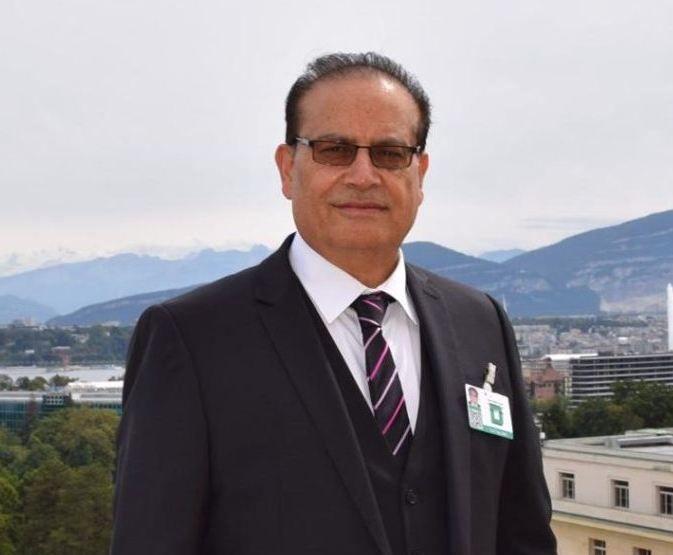By Qamar Bashir
In Pakistan, we often adhere to the belief that force is the primary solution for dealing with terrorists, extremists, separatists, insurgents, and even civil unrest, whether it involves political, religious parties, students, or civil society. The prevailing notion is that if force doesn’t achieve the desired outcome, more force should be applied. In contrast, China’s approach in Xinjiang, where separatism, Pan-Islamism, and Pan-Turkism were significant issues since 1949, has been to respond with development. When challenges arise, China has chosen to accelerate development further. These two philosophies—force versus development—are starkly opposed and have yielded opposite results.
The insurgencies in Xinjiang, Balochistan, and Pakistan’s erstwhile Federally Administered Tribal Areas (FATA) have distinct historical, ethnic, and geopolitical contexts, yet they share similarities in grievances but differ markedly in the governmental responses.
The narratives of the insurgencies in Xinjiang, Balochistan, and FATA share more similarities than differences.
In Xinjiang, the Uyghur insurgency is driven by claims of cultural and religious repression, economic disenfranchisement, and ethnic discrimination. The insurgents frame their struggle as a fight for cultural survival and autonomy, often invoking the idea of an independent “East Turkestan.”
The Baloch insurgency, while lacking a religious element, is fueled by economic exploitation, particularly in natural resources like gas and minerals, political marginalization, and human rights abuses. As one of Pakistan’s least developed regions, many Baloch feel excluded from their own wealth, seeking greater autonomy or independence, citing historical grievances and ongoing exploitation.
In FATA, the insurgency stems from resistance to Pakistan’s military operations, perceived interference in local customs, and the impact of the war on terror. The TTP, in particular, framed its struggle in religious terms, opposing the Pakistani state’s alignment with the US and seeking to impose their version of Sharia law.
When comparing the narratives of these three ethnic groups, the Uyghur and Taliban in FATA share more similarities, particularly in their use of religious connotations to justify their struggles for autonomy or independence. In contrast, the Baloch narrative is distinctive due to its focus on economic and political grievances, without a religious dimension. Consequently, the Baloch narrative may be easier to address or counter compared to the more deeply rooted and ideologically driven narratives of the TTP and Uyghurs.
To counter the Baloch insurgency and integrate the Baloch people into the national mainstream, the government only had to adopt a holistic approach to address the root causes of the conflict, including economic marginalization, political exclusion, and cultural grievances by investing in local development, ensuring fair resource distribution, and enhancing political representation while granting greater administrative autonomy to Balochistan.
On the contrary, the government response to deal with insurgency in Balochistan is normally perceived exactly the opposite. The propaganda war has inculcated the impression albeit without any conclusive evidence that the response of Pakistan’s government included military operations, targeted killings, enforced disappearances.The media is rife with reports that tens of thousands of people, including insurgents, civilians, and security personnel, have been killed in the ongoing conflict making this conflict as one of Pakistan’s deadliest.
Similarly the response of the Government to erstwhile FATA is perceived primarily kinetic. Reportedly, the Pakistani government has conducted numerous military operations (e.g., Operation Zarb-e-Azb) to dismantle militant networks. The insurgency and counter-insurgency operations have led to tens of thousands of deaths, including militants, security forces, and civilians. Displacement and destruction of infrastructure have also been significant.
Contrastingly, in Xinjiang, the Chinese government primarily pursued the policy of development which worked like magic. The region has purposefully made a lynchpin of China’s Belt and Road Initiative (BRI). During the 13th Five-Year Plan period (2016-2020), China invested over $100 billion in Xinjiang’s development. The substantial investment has also been made in infrastructure, industry, IT, and modern agriculture, as part of its broader strategy to integrate the region more closely with the rest of the country and to address the underlying economic disparities that contribute to unrest.
Xinjiang now boasts a state of art modern transportation network, including railways, highways, and airports connecting it to major cities in China and neighboring countries. Notable projects include the Urumqi-Hami section of the Lanzhou-Xinjiang high-speed railway, which links Xinjiang to the eastern provinces. The total investment in these transportation projects over the years runs into tens of billions of dollars.
Cities like Urumqi, Kashgar have been developed on ultramodern lines including the construction of modern residential areas, commercial centers, and public facilities and development of “new towns” to accommodate the growing population and improve living standards.
Xinjiang has become a hub for energy production, particularly in coal, oil, and natural gas. The region is also a significant producer of cotton and textiles, beside adorning industrial parks and zones for petrochemicals and mining, and Kashgar Economic Development Zone and the Urumqi Economic and Technological Development Zone. In addition, IT parks, advanced surveillance technologies, data centers, technology parks, 5G networks, cloud computing, and big data technologies have been developed to attract domestic and foreign investment.
In the agriculture sector China has introduced modern water management, crop genetics, and mechanization to substantially enhance the yield of cotton, grapes, and melons production, besides setting up of large-scale farms, processing plants, and distribution networks.
These investments are part of China’s broader strategy to stabilize the region, boost economic growth, and integrate Xinjiang more closely with the rest of the country and the global economy, particularly through the Belt and Road Initiative.
Contrarily the investments in FATA and Balochistan pale in comparison to the scale of investment made by China in Xinjiang. While China’s investments in Xinjiang have transformed the region’s infrastructure and economy, Pakistan’s investments in FATA and Balochistan are insignificant and are plagued by issues like governance challenges, security concerns, and underutilization of funds no matter how meager.
China’s investments in Xinjiang are part of a strategic focus on integrating the region into the national economy and the Belt and Road Initiative. In contrast, Pakistan’s investments in FATA and Balochistan have often been reactive, addressing immediate security concerns rather than being part of a long-term strategic vision for regional development.
If we genuinely aim to reintegrate FATA and Balochistan into the national mainstream, we must adopt the Chinese philosophy of development and more development. Without this focus on economic and social progress, the cycle of violence from both the government and insurgents will persist, leaving the regions mired in conflict and instability. Development offers the only sustainable path to peace and inclusion.
By Qamar Bashir
Former Press Secretary to the President
Former Press Minister to the Embassy of Pakistan to France
Former MD, SRBC, CEO, ATV












